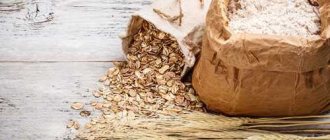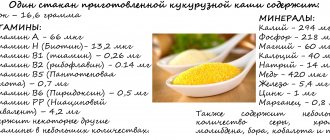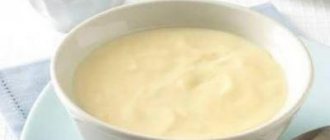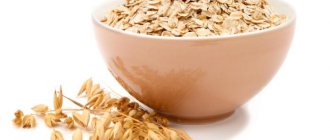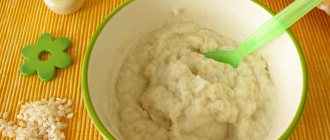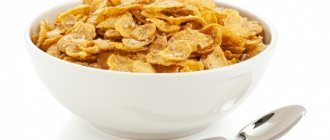Marina Dovbysh - active mother and blogger
Oatmeal is perhaps the most popular breakfast. This porridge can be cooked in water, cream, vegetable and cow's milk, add fresh berries and fruits, honey, nuts, dried fruits, cinnamon, chocolate chips, jam and even blue cheese. The latter option will delight you with its unusual taste combination. Oatmeal is a healthy porridge, but can a new mother who is breastfeeding eat it?
By the way, the diet of a nursing mother is a balanced diet, not a diet! A mother who is breastfeeding must recover after childbirth and saturate her body with vitamins and minerals.
Oatmeal after childbirth: how is it useful?
Oatmeal is an excellent breakfast after childbirth, because the body needs to regain strength and produce milk. Here are some health benefits of oatmeal:
- Vitamins and microelements normalize metabolism - this can help improve the functioning of the gastrointestinal tract;
- Vitamin B improves the process of food digestion and has a positive effect on the skin;
- Phosphorus supports healthy bones and tissues;
- Calcium is very important during breastfeeding;
- Sodium in oatmeal normalizes blood pressure;
- Iron prevents anemia, helps with fatigue and irritability;
- Iodine is good for memory;
- Vitamins A and E - for beauty;
- Potassium and magnesium reduce muscle fatigue.
- And oatmeal is also a good antioxidant! After a sleepless night, have oatmeal for breakfast.
Oatmeal can be eaten almost immediately after giving birth, but it is best to cook it with water. The main condition is to buy oatmeal of good quality and without additives.
Metamorphoses of oatmeal
It should be noted that oatmeal is a very high-calorie product. But the main feature of its calories is the ability to be converted not into fat, but into “long-term” energy: that is why even a small portion of porridge causes a feeling of satiety and retains it for a long time. That is why for a breastfeeding mother trying to stay in her weight category, it is important to eat oatmeal for breakfast every day.
Read also:
All about champignons during breastfeeding and the principles of tasty nutrition for a nursing mother.
Thanks to its neutral taste, oatmeal is perhaps the most versatile grain product - it goes well with vegetables, fruits and even meat. Depending on tastes and food preferences, oatmeal porridge is prepared with milk, water, or broth.
Of course, a nursing mother needs to understand that no additives, even the most favorite ones, can mask the taste of disgustingly prepared porridge - and therefore its preparation and the quality of the ingredients should be treated very responsibly:
- Refrain from using cereal purchased (or produced) a long time ago - otherwise the finished porridge will have a rancid taste (which is especially harmful for a nursing mother - the bitterness can be transferred to breast milk);
- During the cooking process, the volume of rolled oats increases 4 times - so a glass of cereal is enough for breakfast for 3 people. The amount of liquid required for cooking depends on the desired consistency of the porridge: 3 cups – liquid, 1 cup – very thick porridge;
- Cooking time always depends on the size and thickness of the flakes - “extra” ones are cooked for no more than 5 minutes, regular ones – about 20.
- Ready-made porridge (even cooked in water) should be stored for no more than a day, always in the refrigerator - then it loses most of its beneficial properties.
The cooking process itself is very simple: pour cold water over the flakes and put on fire. After boiling, reduce the heat: then cook until tender, stirring constantly and skimming off any foam that forms. Cook for 5 to 15 minutes, depending on the type of cereal. By the way, there is no need to rinse them before cooking!!! At the end of cooking, add a small piece of butter (or a teaspoon of vegetable oil), remove from heat, and close with a lid.
When the porridge has cooled a little, you can add to it, to taste: steamed dried apricots, sultanas, prunes, cherries, raspberries, currants. By the way, you can grate an apple, a pear, mash a banana: as you can see, the range of “goodies” that can be added to oatmeal depends on your imagination.
Read also:
Is it possible for a nursing mother to eat kozinaki and how to do it so as not to harm the baby
And finally, here’s another interesting recipe...
Cutlets for nursing mothers:
- Pour a glass of oatmeal with 1.5 - 2 glasses of chicken broth (you can also use beef broth), close the lid and let it “steam”;
- Crush 1 clove of garlic (the middle, the hottest, is best removed);
- Add a little salt, 1/2 tablespoon of vegetable oil, chicken egg yolk.
- Mix the mixture thoroughly and form into cutlets. Steam for 20-25 minutes.
Bon appetit, excellent health and no problems with breastfeeding!
What oatmeal to buy for a nursing mother: types
- Instant oatmeal. Cereals in the form of flakes, pre-treated with steam. You can prepare it in a few minutes, but before that you need to pour boiling water or hot milk over the oatmeal.
- Oatmeal and Hercules (Rolled oats). These are the largest flakes and need to be boiled for 10-15 minutes.
- Steel-cut oats. Grain cut into small pieces. Cook for about 20 minutes.
- Oat groats. This is a whole grain porridge that takes quite a long time to prepare – 30-40 minutes.
In a slow cooker and pressure cooker, all porridges cook faster.
Which oatmeal to choose when breastfeeding?
Of course, the healthiest thing for mommy will be oatmeal. But crushed oats, like flakes, retain many beneficial substances. And we know how little time a young mother has, so it’s much better to steam instant oatmeal or boil Hercules in a hurry than to be left without breakfast.
When choosing oatmeal, pay attention to the label - cereals or flakes should not be refined, because grains that are too refined lose a lot of their useful properties. “Proper” oatmeal should say “whole grain” or “made from whole grains.”

Avoid instant oatmeal with additives, colors and flavors.
Porridge while breastfeeding
Proper nutrition and a reasonable attitude towards your diet after childbirth is necessary for the comfort and normal digestion of the child, as well as for the restoration of the mother’s body and her well-being. You can and should eat porridge while breastfeeding, although with some restrictions.
• Cereals are essential for normal digestion. • Cereals contain complexes of microelements and vitamins for the restoration of a woman’s body during the postpartum period and normal nutrition of the baby. • When breastfeeding, you can cook almost all porridges, with the exception of semolina.
Which cereals are better to choose
Buckwheat is one of the favorite foods of nursing mothers: it is easily digestible, rich in iron, normalizes metabolic processes, improves the absorption of vitamin C. In addition, buckwheat contains safe protein, a huge amount of essential microelements and amino acids.
Oatmeal is high in fiber, which means it gives you a feeling of fullness and is good for digestion. This cereal contains iodine, magnesium, vitamins A, B, E. In addition, it goes well with various additives - dried fruits, apples, cheese (if the child does not suffer from colic).
Rice during breastfeeding compensates for the lack of iron, amino acids and B vitamins. The content and quality of carbohydrates in this cereal contributes to normal weight gain in the baby. Rice, as a favorite product among women on a diet, cleanses the body and removes toxins. It sometimes causes constipation, so it is recommended to use it in moderation and preferably brown varieties.
Barley in pearl barley porridge during breastfeeding will become a valuable source of nutrients that will help recovery after childbirth. It contains fiber, iron and calcium, natural antibacterial components and vitamins.
Corn grits are also rich in fiber and complex carbohydrates, vitamins and mineral salts, which are essential for a child's growth. Corn flakes can be present in the diet of a nursing woman, but you should choose products without sugar and questionable flavoring additives.
It is important to know
• Porridge can be eaten at any time of the day, the optimal portion is 40 g. • If a child suffers from constipation, you should avoid rice porridge. • If your baby has colic and increased gas production, exclude pearl barley porridge from the diet. • If children have gluten intolerance, it is not recommended to eat semolina, barley, wheat and oats. • Porridge should be eaten fresh, not heated, so it is better to cook a small portion right before eating. • It is best to cook porridge with water. Porridge should not be prepared with milk, as babies are often allergic to cow's milk protein.
• “Quick” cereals often contain flavor enhancers and preservatives, so you should give preference to plain cereals.
deti.mail.ru
When should you not eat oatmeal?
Despite the many positive properties, not everyone can eat oatmeal. In particular, this porridge should not be consumed if you notice an allergic reaction in children or if you have gluten intolerance. Yes, oatmeal contains gluten - gluten.
Often young mothers are sad because they really want something tasty and sweet, but many things are forbidden. You can eat oatmeal cookies while breastfeeding, and bake them quickly and easily.
Eat delicious healthy breakfasts and your baby will soon be drawn to good food too.
Ideal product for a healthy diet
The modern food industry offers a huge number of different oat products: these are ordinary oat flakes (better known by the brand of the Soviet-era manufacturer “Hercules”), various muesli, cookies, crispbreads - all of them help to diversify the menu, while maintaining maximum beneficial properties inherent in oats.
Read also:
The benefits of sea buckthorn for mother and baby during breastfeeding
There is an opinion that a portion of oatmeal eaten daily for breakfast significantly slows down the physical aging of a person and preserves the strength of the neural connections of the brain.
During pregnancy, oatmeal provides the woman's body with nutrients and energy without causing excessive weight gain.
When breastfeeding, oatmeal is also recommended because its regular consumption helps to increase the amount of milk in a nursing mother - therefore, oatmeal is not only possible, but also necessary to eat during this period.
With the help of oatmeal, introduced into the complementary feeding of a breastfed baby, you can achieve normalization of intestinal function, as it has a gentle enveloping effect.
But you shouldn’t get carried away with instant porridges: the oat grains in them are ground to such a state that the valuable fibers are completely destroyed (and the sugar content is “off scale”) - this is clearly not good for either the nursing mother or her child. Moreover, a nursing mother, consuming such porridge, can cause severe allergies in the baby.
It should be noted that ordinary oatmeal (in very rare cases) can cause an allergic reaction (primarily in a breastfed baby). In this case, you can get tested for allergens - most likely, the body reacts not to oats, but to gluten (gluten), contained in most grains.
And yet, we should not forget the main aspect of a healthy diet: no matter how healthy oatmeal is, it should be introduced into the menu when breastfeeding “without fanaticism” - however, a sense of proportion should be maintained in relation to any food product for a nursing mother!
Alternative to oatmeal
However, not just oatmeal, you can make cookies and oatmeal pancakes from oatmeal. Here is the second option just for a new mother who does not have time.
Ingredients:
- Oatmeal - 2-3 tablespoons
- Chicken egg - 1 piece
- Milk – 30 ml
- Salt - to taste
Preparation:
Whisk all the ingredients in a plate with a fork, grease the frying pan with coconut oil, wait for the frying pan to heat up and pour out the mixture. Oatmeal pancake can be combined with lightly salted salmon, cheese or cream cheese, banana, cottage cheese and herbs, etc.
It only takes 10 minutes to prepare this breakfast.
Photo: shutterstock, depositphotos
When can pearl barley and barley porridge be introduced into the diet of a nursing mother?
Barley porridge can be introduced into your diet 1 month after birth. But, if the baby suffers from frequent constipation, colic, or other intestinal problems, the introduction of this product should be postponed for another 2 months.
The first meal of barley and barley porridge should be taken closer to the afternoon, but not in the evening. You cannot eat it on an empty stomach. The amount of the first serving of porridge should be no more than 1 tablespoon. Then you need to monitor the baby’s well-being for 1–2 days. If no reactions occur, then you can increase the portion to 3 tablespoons. And gradually increase the amount of the dish to 200 g.
It is important not to add oil and spices to the barley!
Is it possible to have pearl barley porridge while breastfeeding in the first month?
During the first month after giving birth, a nursing woman adheres to a fairly strict diet. And there is no place for pearl barley on the menu during this period. Porridge made from it is very difficult to digest and can harm the baby’s still fragile gastrointestinal tract. And the gluten content, even in small quantities, can cause allergies in the baby.
